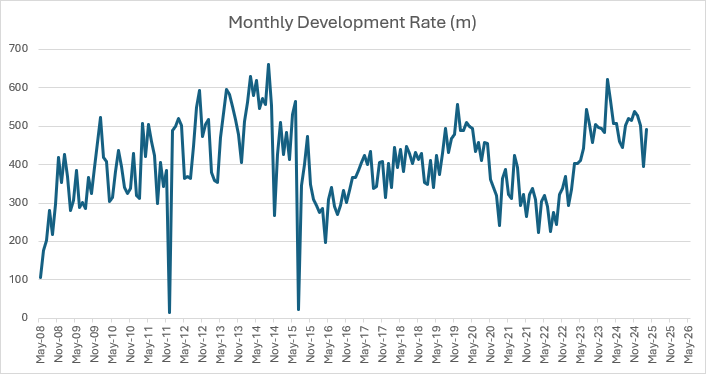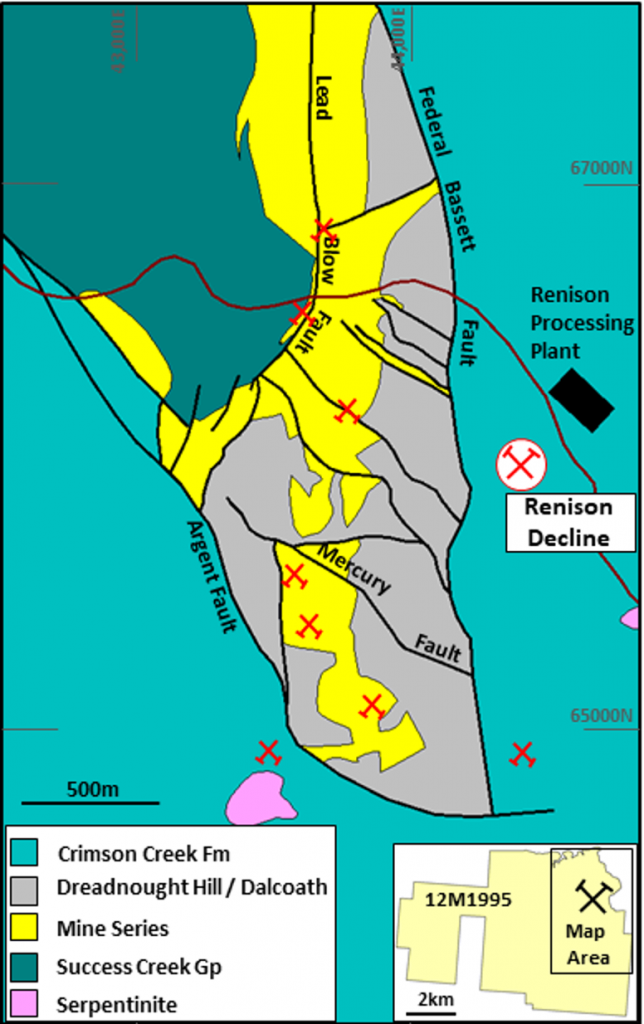Environmental protection and sustainability are of utmost importance to the Renison Mine. We use modern technology and follows best practice in contemporary mining to ensure our operations reflect our commitment to our environment, our people and our work.
Geology at Renison Mine
The Renison deposit is found within thick late Neoproterozoic to Palaeozoic sedimentary and volcanic sequences of the Success Creek Group and Crimson Creek Formation. These formations were deposited within the Dundas Trough between two Neoproterozoic blocks; the Tyennan and Rocky Cape massifs to the east and west respectively.
The deposit is hosted by supratidal to intertidal dolomitic and siliciclastic sediments of the Renison Mine Sequence, comprising the upper ~80m of the Success Creek Group and the lower ~60m of the overlying Crimson Creek Formation. The Renison Mine Sequence ranges from 50 to 200m in thickness, but is in general around 140m, with individual cherts and carbonates from 10 to 20m thick. The primary carbonates are well bedded manganiferous dolomite or pistomesite. The Renison Mine Sequence has been intruded by the Devonian Pine Hill Granite which is interpreted to have likely been the source of the hydrothermal fluids responsible for carbonate replacement tin mineralisation.
The deposit is situated on a part of land known as the Renison Bell Anticline. This area is a horst block, bounded to the NE by the NW-SE trending, 60 to 85°NE dipping Federal-Bassett Fault, to the SW by the subparallel Blow Fault and to the south by the east-west striking Argent fault. The Renison Bell Anticline is about 3 kilometres long and 700 metres to 1 kilometre wide.
Bluestone’s mining operations at Renison have advanced nearly 82 kilometres, with an average progression rate of just over 400 meters per month. This includes around 36 kilometres of underground roadway.

The main mineral of interest here is tin, which is typically in the form of cassiterite. This tin is dominated by 65-70% pyrrhotite (a type of sulfide), and various arsenopyrite and pyrite. Other trace minerals like chalcopyrite, galena, sphalerite, and stannite are found here sporadically.
Mineralisation at Renison occurs in three main forms:
Stratabound massive sulphide orebodies – Thick layers of sulfide minerals within the rock layers,
Strata-fault massive sulphide orebodies – Thick layers of sulfide minerals near fault lines in the rock,
Fault enclosed massive sulphides and vein clusters – Sulfide minerals enclosed within faults and veins in the rock.

Stringent measures are in place to minimize the impact on our mining activity on the environment and surrounding communities during all steps in the extraction process. When is it is time to close a mine site, proper closure and rehabilitation plans ensure vacated mine areas are restored to a stable and safe condition once mining operations are completed.
The Renison Tin Mine has a known mine life of over 12 years, ensuring a strong and robust future for our people and surrounding communities.
